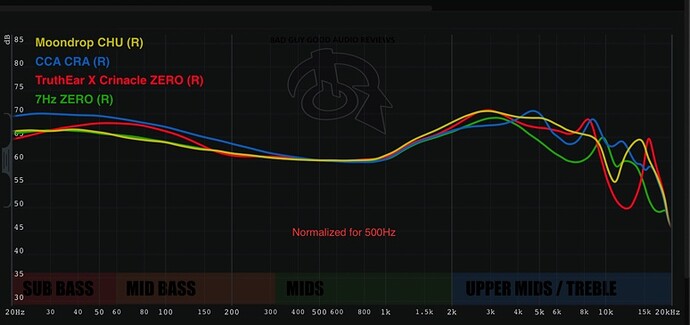@VIVIDICI_111
I’m going to use HBB’s squig because he has all of the sets I referenced before (except Rosefinch):
Big sub-bass with good low-mids: QKZ x HBB
Big mid-bass with good upper-mids: KBear Rosefinch
Balanced warm: CCA CRA
My interpretation of neutral: 7Hz Zero
Neutral-bright: Moondrop Chu
Harman bright: Truthear Zero
We’re going to look specifically at the last four, normalized at 500Hz, which is the point where CRA’s bass boost levels off. Chu and 7Hz are obviously related. The thing that makes Zero more neutral to me is the cut in the upper-mids and treble. The energy that is there from 2-10k in Chu is what makes it a brighter set. Note that Crin’s Zero actually played brighter and thinner than Chu to my ear, even with the sub-bass boost.
I tend to call CRA bass boosted neutral, or balanced warm, because as you can see, once you’re in the mids, CRA follows along with 7Hz Zero, but has a more gradual pinna gain, with a bit more treble energy but not peaking as high as Chu or Crin’s Zero.
CRA is more of a U-shape than a V-shape because of how gradually it rises into the mids and treble.
